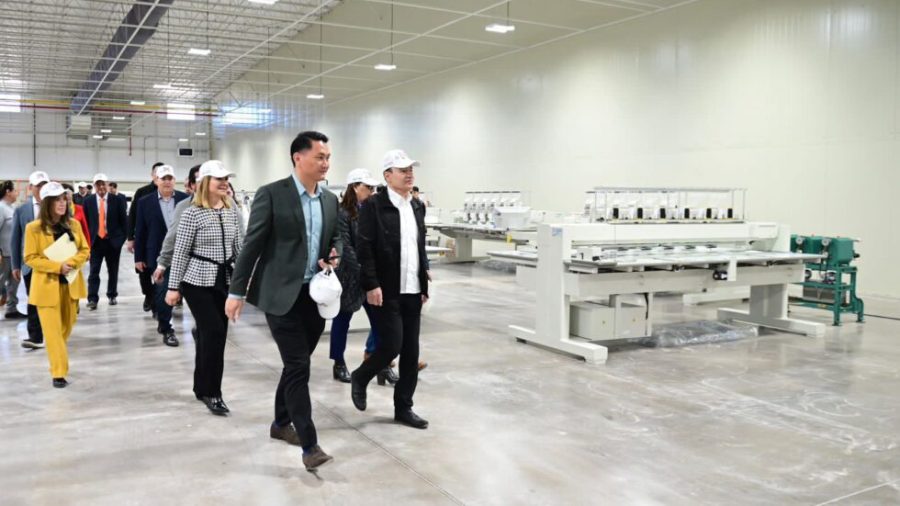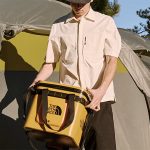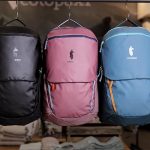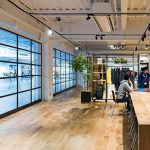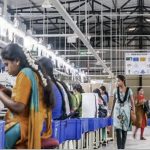William Blair (Blair, the firm, the company) has taken a deeper dive into the psyche of C-level executives as the firm gets a handle on their mindset regarding the impact of President Trump’s various tariff actions.
To understand executives’ thinking and the impact of the ongoing tariff threat, Blair curated takeaways from conversations with its network of companies in the hardlines and softlines industries.
“Our goal here was to find commonalities and a sense of how management teams are navigating the current environment,” the company said in its report summary. “Our hope is that the summation of these conversations illustrates near-term and potentially longer-term ramifications of current uncertainty,” Blair continued in its intro. “As most public companies are in quiet periods, these conversations (the vast majority of which were with private companies) might also provide a much-desired view into derivative impacts and demand trends ahead of an important, and likely volatile, first-quarter earnings season.”
The firm cautioned that there were no answers in the report.
“The reality is that in a week, if not by the time this report is published, we are likely to start getting more clarity as it relates to early deals with countries that are at the front of the negotiating line, including important trading partners like Vietnam (where most Chinese production has moved) and India,” the firm said.
Blair acknowledged that in the three and a half weeks since April 2, there had been decisions made that could reverberate through the year, including pulling back on orders and spending, some of which it has seen in first-quarter reports. A few companies declined to pause any guidance or outlook for the full year until tariff “negotiations” make their way through to a near-term future with more clarity.
“By most accounts, consumer demand is healthy and stable from March,” Blair said. “This, to us, suggests relatively quick capacity to rebound, though these coming weeks are critical to gain some clarity before more lasting disruption occurs.”
Blair suggested there was an overarching strategy to zero out China production as much as possible, something that is going to be more difficult for the hardlines companies while the softlines brands are finding far more diversity in their movement to other countries as they got a head start from countering the tariff actions taken during Trump 1.0 and continuing under Biden.
The irony (not really) is that many, if not most, of the factories that popped up in Vietnam, Cambodia and other SE Asia countries are owned and run by the Chinese. In some cases, they are just a waypoint to circumvent the China tariff.
As a clear example of the type of companies that made the move, William Blair noted:
- Roughly 20 percent of textile and apparel imports to the U.S. still come from China, down from one-third in the decade leading into 2020, and
- China contributes 72 percent of sporting goods and toys imports, down from 81 percent in 2018, 44 percent of household appliances imports (down from 54 percent in 2018), 29 percent of furniture imports (down from 57 percent in 2018), and only 9 percent of auto parts imports (down from 13 percent in 2018).
To dig deeper, Blair specifically addressed the question of factory moves from China to other countries.
Have you moved a significant amount of production out of China in recent years leading into April, and/or can you be totally out of China if you wanted to? Beyond China, are you shifting production across countries or taking a wait-and-see approach?
“While moving out of China is perhaps an obvious maneuver, positioning within other geographies is less clear,” Blair wrote as it assessed the responses. “There were a handful of beneficiaries as production moved out of China, namely India, Pakistan, Bangladesh, and Vietnam for softlines, and Vietnam, Mexico, Cambodia, Indonesia, and Thailand for hardlines.
“Most of the companies we spoke to seem to have moved production from China into Vietnam in particular following a flow of Chinese-owned and staffed facilities that migrated to the country starting in the first Trump administration. Given that all these countries face an uncertain future, there is not one obvious geography that feels more secure, particularly as the overwhelming consensus is that these tariffs will ultimately come down (consensus is uniformly 10 percent to 20 percent across all countries outside of China).
Blair said that, for now, the best solution is a well-diversified supply chain across multiple jurisdictions, potentially with built-in redundancies to allow for nimbleness.
“We also see Latin America emerging as a jurisdiction coming more into focus given the lower initial proposed tariffs and near-shoring opportunities, although many companies we spoke to still seem to be waiting for more visibility into tariffs on the region before committing capital and bandwidth,” the firm noted.
Have you delayed/canceled orders, or do you intend to do so if this continues to drag on? If so, what is the day/week/month cutoff you are waiting for?
“Given lead times often around six months design-to-floor, if any tariffs hold, the earliest we expect to see these costs show up in COGS would be the third quarter,” the firm said when assessing these answers.
Most footwear and apparel companies would see a six-month lead time as a dream as the industry has consistently viewed 18 months as a standard from concept to retail — maybe 12 months for a push project — which does not include the vertical players and the fast fashion brands as those are consistently faster on turn and burn schedules.
Blair said that as negotiations drag on, they see some risk that companies could delay or cancel orders.
“At this point, we do not believe this is happening on a broad scale. However, our conversations indicated a few instances of management teams temporarily delaying orders under the mindset of: ‘Why pay duties now if things change?'”
The firm noted that retailer Five Below adopted a similar strategy after pausing orders from China beginning April 10 to provide flexibility amid rising tensions.
The last few weeks have seen evidence of that move. Why pay tariffs now if they come later? However, that strategy will only work if the market is not in a key selling period. That is fast approaching, with back-to-school right around the corner. More than one CEO has found their “D-Day” to ship goods to be on flow by July 25. Many missed the June 25 deliveries if they did not hit the water before April 2.
What is your view on taking a price versus a margin hit on higher tariffs?
Blair rightly observed that it would be exceedingly difficult for many companies playing in discretionary categories to take a price hit, with a few exceptions.
“We looked at two major categories — apparel and furniture — to form the general basis for our assumption,” the firm noted. “In the 30 years prior to the pandemic, both categories maintained relatively flat pricing. Apparel prices increased by over 10 percent, and furniture prices increased by nearly 20 percent from 2021 to 2023. This was on top of broader core inflation that was up 14 percent in the same period.”
The firm believes that companies could take a price hit given the combination of stimulus payments, forced savings from the pandemic and stronger real wage growth. In an environment where everyone will again be looking to take a price hit without further stimulus or greater wage increase, the firm believes a certain amount of a price increase for companies will be harder won among an increasingly value-conscious and selective consumer.
And this is compounded by the current level of tariffs being discussed.
“Encouragingly, we see a certain healthy level of caution around price reflected in commentary from the companies we spoke with,” said the Blair team. “The notable exception being those operating in more defensive categories, such as groceries, uniforms, and aftermarket auto parts, which were confident in the ability to pass through any tariff impact. Other companies discussed ways of trying to absorb costs through greater efficiencies, value engineering, or cost cutting.”
Do you expect tariffs or related changes in production to impact your plans for new product launches or seasonal product availability?
“Related to canceling orders, we were curious as to the potential impact that current tariff negotiations might have on planning new launches and seasonal goods, again to assess any potential air pockets in inventory moving further through the year,” Blair said when discussing this question.
The consensus was that most companies were moving ahead with existing strategies for new and seasonal product launches this year, with the caveat that there is much uncertainty around planning inventory for the second half of the year. Blair said they expect management to lean on the conservative side, which could squeeze availability if consumer spending remains resilient.
“Even if tariffs lift, we would expect the third quarter, in particular, to be light from an inventory standpoint,” the firm commented. “Some companies noted that they had pulled back in spending in other ways, including advertising and real estate, which we believe could have broader economic impact in the more immediate period.”
And then the big one.
Would you consider moving production to the U.S.?
Blair said this seemed like the easiest fix to the current tariff overhang, but the overwhelming answer to this question was no. That makes sense, as there appears to be limited to no infrastructure to flip a switch and make it happen. No one makes shoes except New Balance in Maine and a few other small brands that built their names and businesses on Made in America. Apparel is easier, but that switch will not turn on quickly either, as labor costs and worker training will take time. Estimates for both categories suggest at least five years to get up and running.
A move to the Caribbean or Mexico would make more sense under the current trade agreements and the level of increased factory training and build-outs that have been in process for some years. Mainland Headwear, the China-based manufacturing partner of New Era, has been struggling to get its New Mexico facility up and running after issues with staff training and the factory being built. Then, the issue of where the components and textiles will come from to manufacture the product. Most of that comes from China today.
“The two most-cited issues are labor cost and availability. Other companies we spoke with brought up the challenges presented by the pollution caused by large-scale manufacturing, particularly textiles,” the firm said.
Blair contends that companies are producing softline goods in the U.S., but most are still sourcing fabric, even cut fabric from outside the U.S.
The firm said hardline categories typically maintain a slightly heavier domestic production presence, whereas North Carolina’s Piedmont Triad remains a furniture manufacturing hub, particularly in upholstery and solid wood, and the Rust Belt remains active in aftermarket auto parts production. However, both are shells of their former selves after falling victim to Chinese offshoring in the 1990s and 2000s.
“In our opinion, a more meaningful shift in production to the U.S. for both the softlines and hardlines industries is an unlikely event,” the Blair team wrote. “Those that already produce in the U.S. could have some opportunity to expand. But by and large, the higher cost of production and lack of skilled laborers (84,000 workers in the U.S. that make clothing) make that a tough proposition without significant time and investment.”
Blair sees a more likely scenario in which production could shift to Mexico or Latin America more broadly, given lower costs and, at least in the case of Mexico, a large and efficient workforce.
“In fact, several companies highlighted Mexico as a viable alternative to China and Southeast Asia, with a quick ramp possible in the near term, but many are waiting for visibility into a more defined agreement between Trump and Mexican President Claudia Sheinbaum Pardo,” the firm concluded.
They may want to talk with Mainland and New Era. It appears easier said than completed.
In a report wrapping up its 2024 financials, Mainland Headwear Group, which operates factories in Bangladesh, Mexico and Mainland China, expects each of its plants to complement the strengths of the others. That has not been the case in its Mexico venture.
The Shenzhen factory focuses on design, product development and production support for the Group.
“Leveraging advanced automated production equipment and many skilled workers, the Bangladesh factory can produce 6.5 million pieces of headwear and 300,000 pieces of accessories, such as belts, wallets, and backpacks, per month,” the company reported. Mainland has 7,400 workers trained in Bangladesh.
“The Mexican factory, completed at the end of 2023, boasts the geographical advantage of being close to the U.S. market and thus can quickly respond to North American customers,” the Group noted. “After months of training staff and adjusting production workflow, the plant is expected to produce up to 1.0 million pieces of headwear products a month by the end of 2025.”
The factory in Mexico, pictured lead image, located in Agua Prieta in Sonora, had 490 employees when it opened in 2023 and plans to initially generate 1,600 new jobs, with projected hiring of 3,000 people by 2025 and reaching 4,000 by 2027, according to the governor of Sonoran.
It is hard to read “after months of training” and “the plant is expected” and not think that things are not moving along as quickly in Mexico.
The Bangladesh factory operating profit rose 15.2 percent year-over-year to HK$194.6 million in 2024, compared to HK$169.0 in 2023. As for the Mexico factory, which was still in the early production stage, the Group increased investment in technical support, staff training and management and gradually optimized production processes to improve efficiency.
The Mexico factory was completed at the end of 2023 but, entering 2025, it still requires increased investment in technical support, staff training and management and production processes to improve production efficiency before it will become a profitable venture.
The U.S. would be exponentially more difficult.
Image courtesy Mainland Headwear

